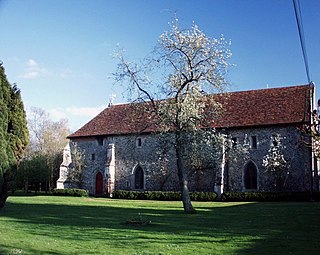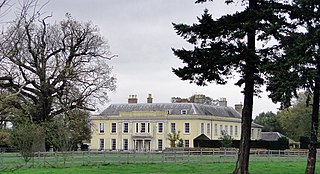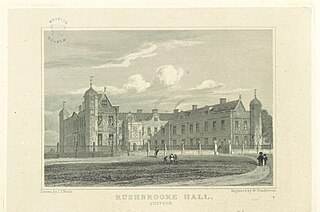
Newe House is a Grade II* listed Jacobean dower house in the village of Pakenham, Suffolk. [1]
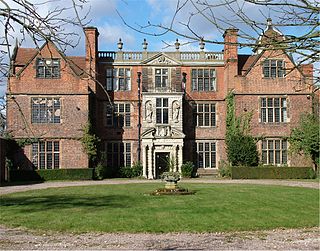
The Jacobean style is the second phase of Renaissance architecture in England, following the Elizabethan style. It is named after King James I of England, with whose reign it is associated. At the start of James' reign there was little stylistic break in architecture, as Elizabethan trends continued their development. However his death in 1625 came as a decisive change towards more classical architecture, with Italian influence, was in progress, led by Inigo Jones; the style this began is sometimes called Stuart architecture, or English Baroque.

On an English, Scottish or Welsh estate, a dower house is usually a moderately large house available for use by the widow of the previous owner of the estate. The widow, often known as the "dowager", usually moves into the dower house from the larger family house on the death of her husband if the heir is married, and upon his marriage if he was single at his succession. The new heir occupies the now vacated principal house.
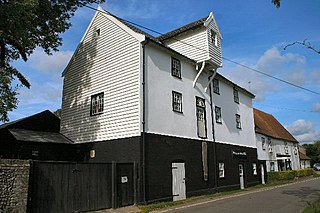
Pakenham is a village in the English county of Suffolk. Its name can be linked to Anglo-Saxon roots, Pacca being the founder of a settlement on the hill surrounding Pakenham church, an area higher than the waters of Pakenham Fen. The discovery of many Anglo-Saxon remains, notably that of a bone-toothed comb in the old school garden in the 1950s, testify to the authenticity of the site. The village was therefore named Pacca's Ham, i.e., the home of Pacca, a name which eventually became Pakenham, The Anglo-Saxon family name later becomes "de Pakenham". Pacca's descendants continued to farm here until the Norman Conquest, 1066.
Newe House was built in 1622 by Sir Robert Bright and today the façade of the house remains largely unmodified. Sir Robert had bought the land surrounding Pakenham from the Bacon family several years before. In the late 1640s it was sold to Sir William Spring, who had been a prominent Parliamentarian during the Civil War. The house remained in the Spring family until the mid-nineteenth century, being used as the family dower house. The Spring family coat-of-arms is still apparent above the main door to the manor. [2]
Sir William Spring, 1st Baronet was an English Parliamentarian politician and a member of the Spring family of Pakenham, Suffolk.

The English Civil War (1642–1651) was a series of armed conflicts and political machinations between Parliamentarians ("Roundheads") and Royalists ("Cavaliers") over, principally, the manner of England's governance. The first (1642–1646) and second (1648–1649) wars pitted the supporters of King Charles I against the supporters of the Long Parliament, while the third (1649–1651) saw fighting between supporters of King Charles II and supporters of the Rump Parliament. The war ended with the Parliamentarian victory at the Battle of Worcester on 3 September 1651.

The Spring family is a Suffolk gentry family that has been involved in the politics and economy of East Anglia since the 15th century, and held large estates in Ireland from the 16th century.
Newe House has been extensively restored by its current owners whose family have owned it since 1947.

